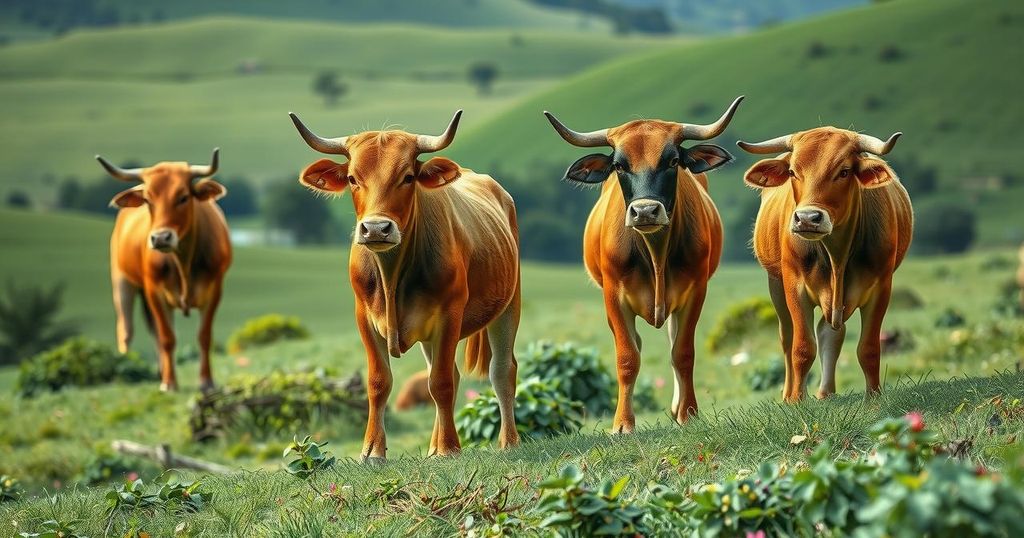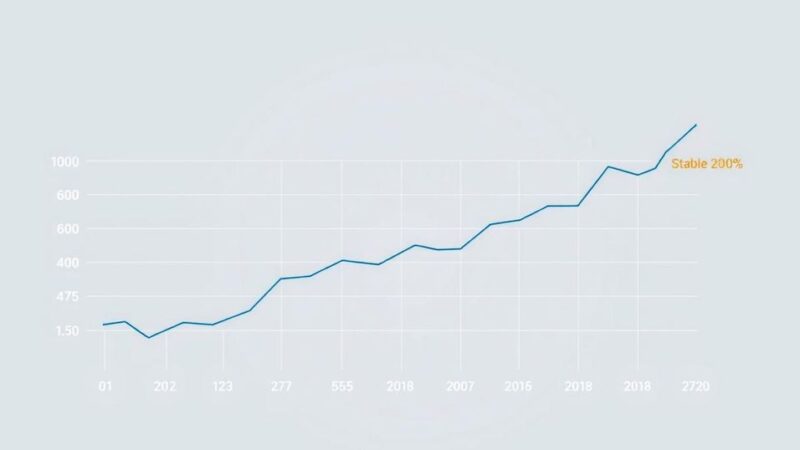The Ongole cattle breed in India is declining sharply in population despite becoming highly valued in Brazil, where it represents 80% of cattle. The breed’s domestic numbers dropped from 1.5 million in 1944 to 634,000 in 2019, influenced by farmers’ preference for crossbred cows. Conservation efforts exist, but challenges remain due to mechanization and market restrictions.
India’s Ongole cattle breed is experiencing a drastic decline domestically, but it is increasingly valued in Brazil where it commands high prices. In Brazil, approximately 80 percent of the country’s 226 million cattle are Ongole, primarily raised for beef, evidenced by the sale of the purebred cow Viatina-19 for $4.38 million (Rs 40 crore) in February 2025. This sale exemplifies the breed’s significant global market value, starkly contrasting with its dwindling population in India.
The number of Ongole cattle in India has decreased from 1.5 million in 1944 to just 634,000 in 2019, despite initiatives to conserve the breed. Concurrently, the indigenous cattle population saw a 9 percent decline from 2007 to 2012 and another 6 percent drop from 2012 to 2019, while exotic and crossbred cattle population surged by 30 percent during the same timeframe. Farmers prefer crossbred cows due to their higher milk production, undermining ongoing government programs like the Rashtriya Gokul Mission that encourage indigenous breeds.
Ongole cattle, known for their resilience to heat and diseases, originate from Prakasam District in Andhra Pradesh. The breed holds cultural and historical significance in India. Since the late 19th century, Ongole bulls have been exported to South America, with about 7,000 cattle sent, influencing Brazil’s agricultural advancements.
The decline of Ongole cattle in India is attributed to farmers favoring crossbred variants that offer greater milk yield and the reduced need for draught animals due to mechanization. Selective breeding practices have also shifted focus from milk production to strength, further diminishing the breed’s significance in modern agriculture.
Efforts to revive the Ongole population are being made at Guntur’s LAM Farm, one of the few conservation centers dedicated to this breed. Here, advanced breeding methods like IVF-embryo transfer are being implemented to preserve purity. However, challenges persist due to decreasing demand for Ongole cattle. Additionally, export restrictions in India since the 1960s hinder potential market growth. Although there were discussions about lifting the ban in 2023, they were met with resistance, contrasting with Brazil’s effective lineage tracking that supports the breed’s quality improvements.
The Ongole cattle breed is currently facing significant challenges in India, with a notable decline in population despite its increasing demand and value in Brazil. The preference for crossbred cows due to higher milk production is a primary factor contributing to this decline, alongside mechanization and changing agricultural practices. Conservation efforts utilizing advanced breeding techniques show potential; however, external market restrictions and reduced demand hinder revival efforts. Learning from Brazil’s cattle management strategies may provide solutions for the Ongole breed’s preservation.
Original Source: www.business-standard.com






